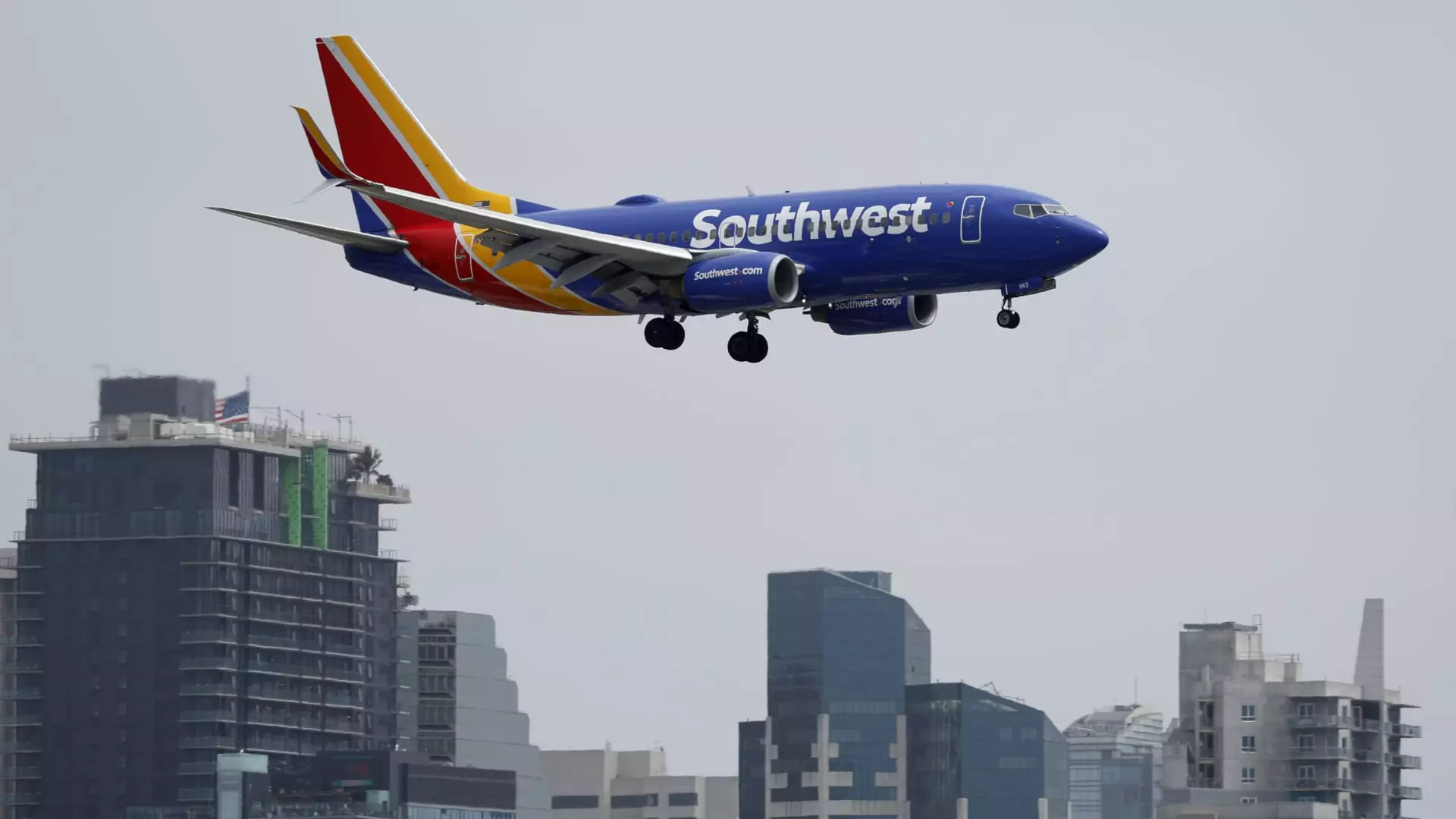Southwest Airlines is navigating turbulent skies as it grapples with investor scrutiny and operational shifts. Elliott Investment Management, an activist investor, has been vocal about its expectations for changes within the airline’s leadership. Their call for a reassessment of management effectiveness illustrates a broader demand for enhanced operational performance in a rapidly evolving airline industry. This investor pressure signals that Southwest may be at a pivotal turning point, where strategic choices will shape its future.
Transformational Strategies in Progress
In response to mounting pressure, Southwest has embarked on a comprehensive reevaluation of its long-standing model. Recently announced changes mark a departure from the airline’s traditional practices, including the introduction of assigned seating—a significant shift from its iconic open seating policy. Additionally, the carrier aims to enhance its revenue streams by offering premium seat options that promise greater legroom. This pivot reflects an understanding that consumer preferences have evolved, necessitating a more flexible approach to service offerings.
Moreover, Southwest’s willingness to explore unconventional flight schedules, such as red-eye flights, showcases its commitment to aligning services with market demands. The digital strategy has also evolved, with new partnerships allowing their flights to appear on platforms like Google Flights and Kayak. Targeted advertising aimed at younger demographics reveals Southwest’s intent to capture a broader market segment and ensure relevance in a competitive landscape.
Despite these ambitious initiatives, Chief Operating Officer Andrew Watterson has acknowledged that tough decisions lie ahead. The airline’s assertion that “difficult decisions” must be made indicates a recognition that while strategic changes are indispensable, their implementation may have direct impacts on employees and operational structures. Watterson clarified that while station closures aren’t on the table, there may be adjustments in certain locations to optimize profitability. This introduction of potential restructuring underscores the industry’s broader trend of reallocation and redundancy driven by financial necessity.
The necessity for financial restructuring is not unique to Southwest. Other airlines, like JetBlue, have already initiated cuts in less lucrative routes to maximize aircraft efficiency and income. Such adaptations are key in today’s economic environment, where margin optimization is essential for survival and growth.
Southwest Airlines plans to elucidate its strategy during an investor day at its Dallas headquarters, offering more clarity on forthcoming changes. The airline’s commitment to addressing declining profit margins reflects a broader trend in the aviation sector where companies are compelled to innovate and adapt in real-time. As the landscape for commercial airlines continues to evolve, Southwest’s response will not only determine its trajectory but could also set benchmarks for the industry’s future operational strategies.
In the spirit of transparency and adaptability, Southwest’s leadership will need to navigate these shifts while fostering a culture of resilience among its workforce. As the coming days unfold, stakeholders will keenly watch how Southwest Airlines balances the demands of profit maximization with maintaining employee morale and customer satisfaction in a challenging economic environment.

